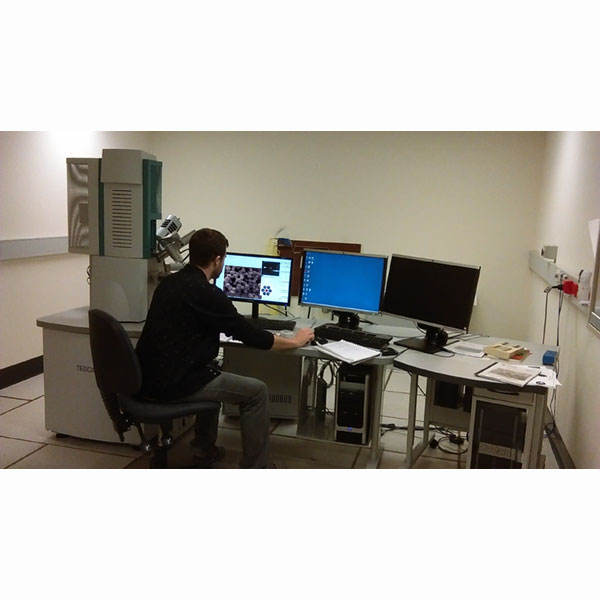Back in 2011, The University of Western Australia purchased the first TESCAN VEGA Scanning Electron Microscope (SEM), the first TESCAN installation in Australia. Since then, they have never looked back and the VEGA has become a workhorse for their geological researchers.

The system resides in the Centre for Microscopy, Characterisation and Analysis and is constantly booked during normal hours and does plenty of overtime out of hours. It is primarily used by researchers who are working on geology, geochronology and ore deposits. While the researchers are mainly postgraduate level, their research is very much of an applied nature as the university has strong ties to the mineral resources industry.
UWA’s VEGA SEM includes an Energy Dispersive Spectrosmeter (EDS) and Cathodoluminescence (CL) detectors. This particular configuration is ideally suited to the analysis of geological specimens in that the EDS system can provide detailed elemental analysis that allows different materials to be identified. The CL system is essential for imaging minerals containing Rare Earth Elements, Uranium, and Thorium, such as Zircon, that can be used for radiometric dating using a mass spectrometer.
“The VEGA has become an invaluable research tool for our researchers who are carrying out geological research and ore mineral characterisation. The information they produce is highly relevant to the mining industry and mineral exploration activities.”
Dr. Janet Muhling
These complimentary systems can be used like X-Ray Fluorescence (XRF) and X-Ray Diffraction (XRD) for elemental and mineralogical analysis, but the VEGA has the advantage that it can also provide high resolution and high magnification imaging of samples which can reveal additional important information such as grain size, grain size distribution, morphology and how different minerals are associated with each other.
Dr. Janet Muhling has been heavily involved with the VEGA SEM and said, “The VEGA has become an invaluable research tool for our researchers who are carrying out geological research and ore mineral characterisation. The information they produce is highly relevant to the mining industry and mineral exploration activities.”
When asked about its performance, she replied, “one of the great things about the system is its ease of use. We run training courses for new users three times a year and new operators can be generating quality images and data within a very short space of time. The number of users and the relevance of this system to geological characterisation mean that it is one our most heavily used instruments. Its reliability and low maintenance requirements ensure that it is constantly is use.”
“One of the great things about the system is its ease of use. We run training courses for new users three times a year and new operators can be generating quality images and data within a very short space of time. The number of users and the relevance of this system to geological characterisation mean that it is one our most heavily used instruments. Its reliability and low maintenance requirements ensure that it is constantly is use.”
Dr. Janet Muhling
The TESCAN VEGA at UWA is the third generation of the VEGA family and benefits from the latest electronics, optics and software. It is available in several chamber sizes to suit the vast majority of applications, including the smallest VEGA SB that is priced similarly to smaller benchtop SEMs.
TESCAN have a complete range of SEMs and Focussed Ion Beams (FIBs). For more information on these and a range of other products for geological and mineralogical characterisation.
